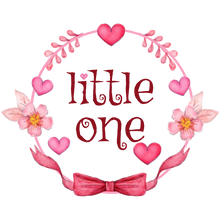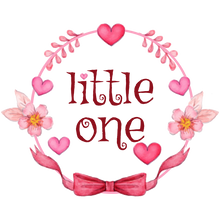
What factors should you consider when buying children's clothing?
9 Most Important Factors to Consider When Buying Baby Clothes
- When shopping for clothing for children
- What should be paid attention to?
1.Buy from regular places
Try to go to shopping malls, supermarkets or specialty stores to buy children's clothing.
The management of formal business premises is relatively standardized, there are inspection and control measures when purchasing goods, and the after-sales service is relatively perfect.

2.see logo
When purchasing children's clothing, pay attention to the product identification, that is, the instructions for use.
Check the manufacturer or operator on the hangtag first, and keep the hangtag during the use of the garment.
Secondly, check the safety category (ie, Category A, infant textile products should at least meet the requirements of Category A, and must be marked with the words "Baby Products" on the instructions for use, suitable for infants under 36 months or 100cm in height and below ; Category B, textile products that directly contact the skin should at least meet the requirements of Category B; Category C, products that do not directly contact the skin should at least meet the requirements of Category C).
Looking at the quality level status, it is divided into excellent products, first-class products, and qualified products (there are also second-class products in some categories).
Finally, check the durability label sewn on the garment, whether it is marked with the model specification, clothing composition, washing method, etc. It is necessary to choose different categories of children's clothing according to different ages and needs, and to see whether the content on the shopping invoice is consistent with the real object.
3.Material selection
In terms of materials, the choice of children's clothing should be based on comfort, softness, good hygroscopicity, and no irritation to the skin. Children's clothes should be mainly made of natural fabrics such as cotton, linen, and wool, and they should be close-fitting clothes, but also soft and skin-friendly. Among them, the cotton material is the best, which is soft and hygroscopic, not irritating, and not easy to hurt the delicate skin of children.
The brighter the color of the clothing, the more chemical substances such as color-fixing agents are used. Relatively speaking, the color fastness to rubbing, soaping, and perspiration is not good. In other words, it is easier to fade. Try to buy children's clothing in light colors, without optical brighteners or without pigment printing, and try not to buy children's clothing with anti-wrinkle treatment.
In addition, in autumn, the temperature difference between morning and evening is large, it is hot and cold, and the children are restless. Adding or removing clothes according to the weather has become a problem for many mothers. Therefore, when choosing clothes for children, the breathability of the fabric is also very important.

4.smell
Decomposable carcinogenic aromatic amine dyes are prohibited in children's clothing, and there must be no odor, such as musty smell, gasoline smell, kerosene smell, fishy smell and various aromatic hydrocarbon smells, etc. At the same time, children's clothing with fragrance should be avoided.
At the same time, it should be washed and dried before use to protect the health of children.
5.Check Accessories
Infants and children may grab or tear out of their own curiosity or instinctive actions, and even mistake them for food and have terrible phenomena such as gnawing or swallowing.
Pay attention to the firmness of various decorative parts such as buttons to prevent them from falling off and being accidentally swallowed by children. Accessories used in infant and children's clothing should also be free of accessible sharp objects and objects containing sharp edges. Try to choose as few accessories as possible for young children, especially clothing with few metal accessories.
6.Check the rope
Clothing for children under 7 years old (under 130cm) should not have any cords on the head and neck. The shoulder straps should be fixed, continuous and have no free ends. Decorative cords on shoulder straps shall not have free ends exceeding 75mm in length or loops exceeding 75mm in circumference.
Also note that apart from the belt, there should be no cords sticking out or attached to the back.
Children's clothing, referred to as children's clothing, refers to clothing suitable for children to wear, generally refers to clothing worn by people from birth to 14 years old. Among them, children's clothing under 3 years old is also called infant clothing.

common dangers
1. Suffocation hazard caused by small objects (zippers, buttons and other accessories) on children's and infants' clothing
Small objects on children's and infants' clothing may be swallowed or inhaled by children if they are loose due to poor fixation. After entering the respiratory tract, these accessories may block the respiratory tract and cause suffocation; after entering the digestive tract, it will cause intestinal obstruction, intestinal expansion, and in severe cases, intestinal perforation, intestinal necrosis, and even life-threatening. There have been many injuries caused by similar small parts in China.
Children accidentally swallow small parts causing suffocation
Buttons (small parts) loose on children's and infants' clothing
2. Choking hazard caused by ropes on children's and infants' clothing
Too long ropes on children's clothing are prone to entanglement, easy to be clamped or hooked by moving objects such as doors and elevators, and tripping and other situations will lead to towing accidents, causing hidden dangers to children's safety. Do not choose clothes with any cords on the head and neck for children. At the same time, pay attention to whether the cords in other parts of the garment are too long or easy to form slip knots and loops to prevent accidents.
Clothing ropes entangled in slides or vehicles causing danger
The rope is too long, and it is easy to cause danger due to clamping and hanging.
Precaution
7. Buy children's clothing with complete logos.
Problems found in the process of wearing are well documented, which is conducive to safeguarding their legitimate rights and interests and avoiding unnecessary losses. Children's clothing should be marked with the manufacturer's name and address, product name, product model or specification, fiber composition and content, maintenance methods, product standards implemented, safety categories, etc., and infant clothing should be marked with the words "Baby Products". . Durability labels should be used for size specifications, fiber content, and washing methods. Durability labels sewn on baby clothing that can be worn close to the body should be placed in a position that does not come into direct contact with the skin.
8. All kinds of accessories, buttons and other small accessories on children's clothing should be checked by hand to see if they are firm and whether there are sharp edges and tips.
Avoid buying clothes that are easy to fall off such as metal accessories and buttons to prevent accidental swallowing by children. harm. It is recommended to regularly check whether the buttons are loose or loose, and ensure that they are fastened before wearing them to children, so as to avoid danger due to accidental swallowing by children. When buying, choose clothing that is simple in style and has few decorations.
9. If a child accidentally swallows buttons and other accessories, or if a child develops sudden abdominal pain, nausea or vomiting and other clinical symptoms suspected of swallowing hard objects, they should be sent to the doctor immediately for treatment.

